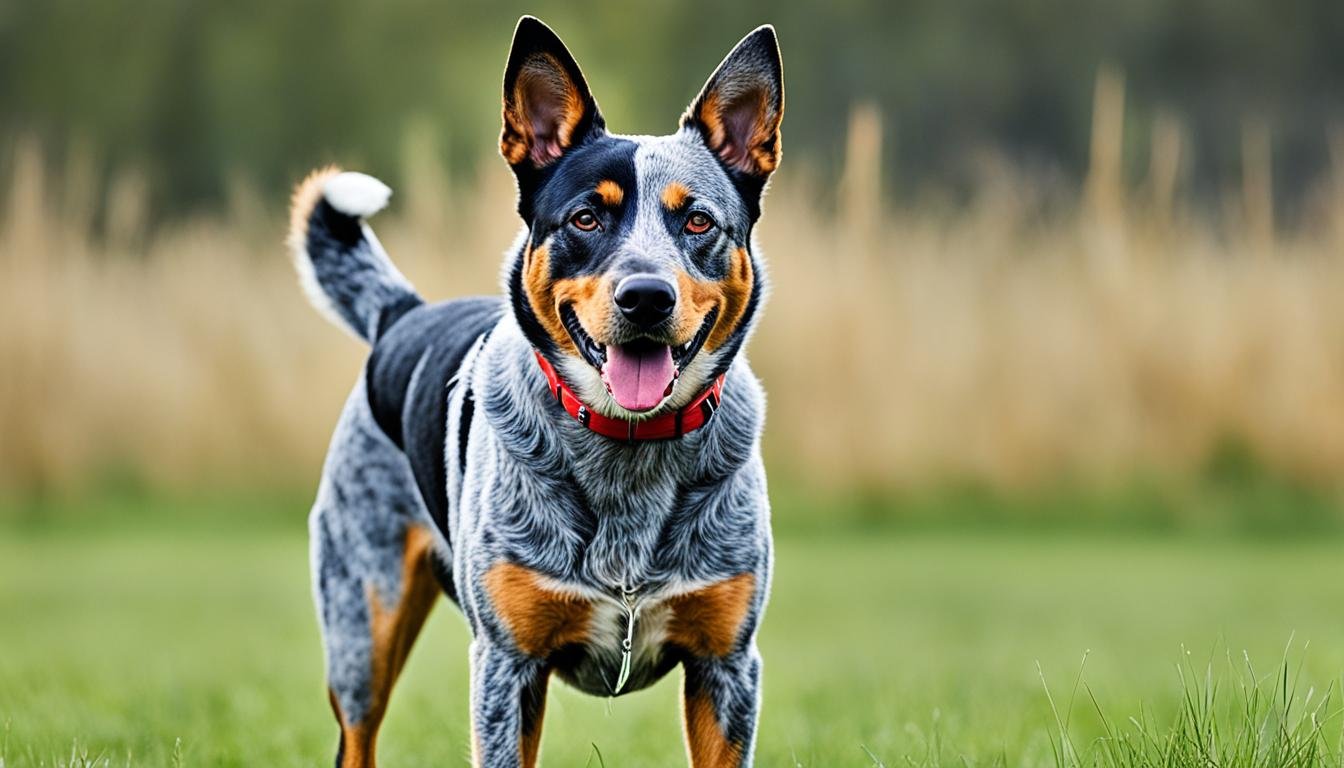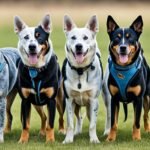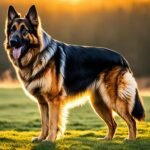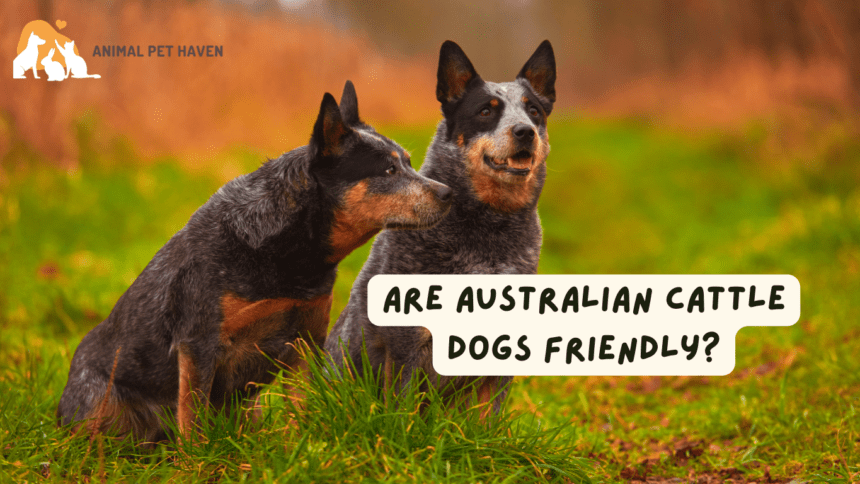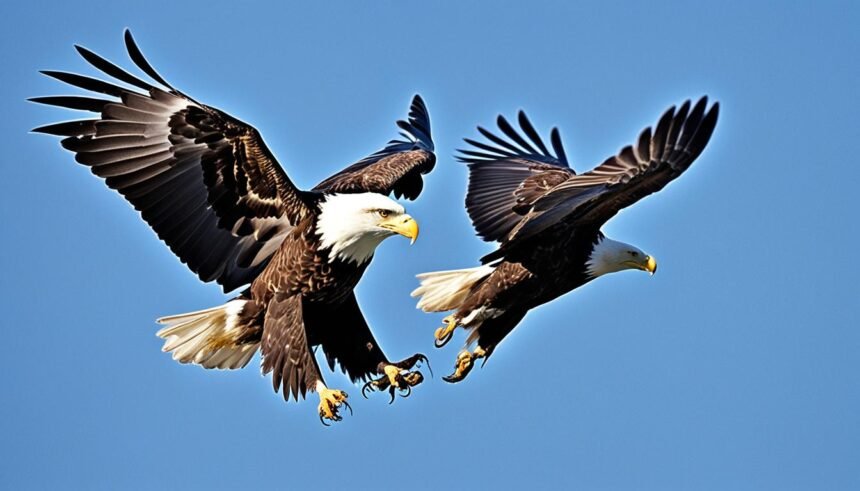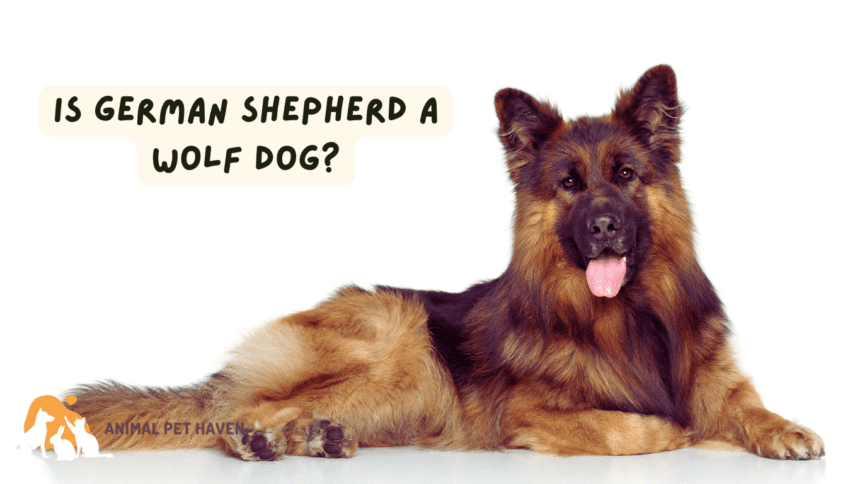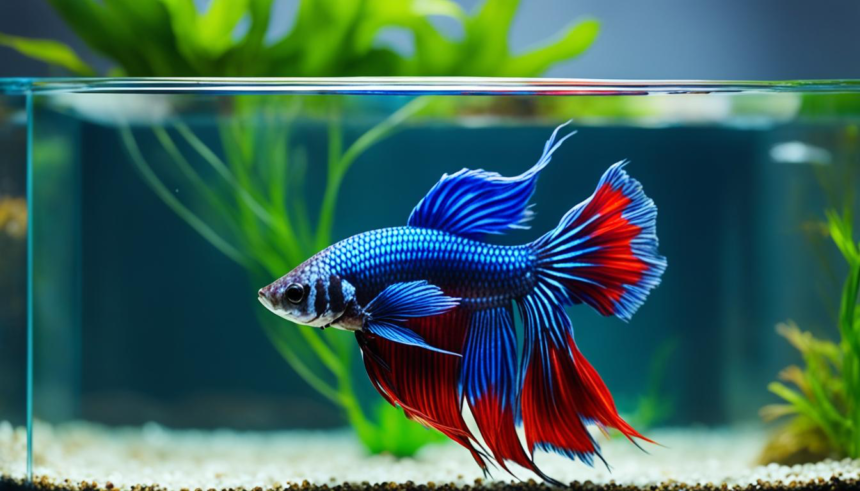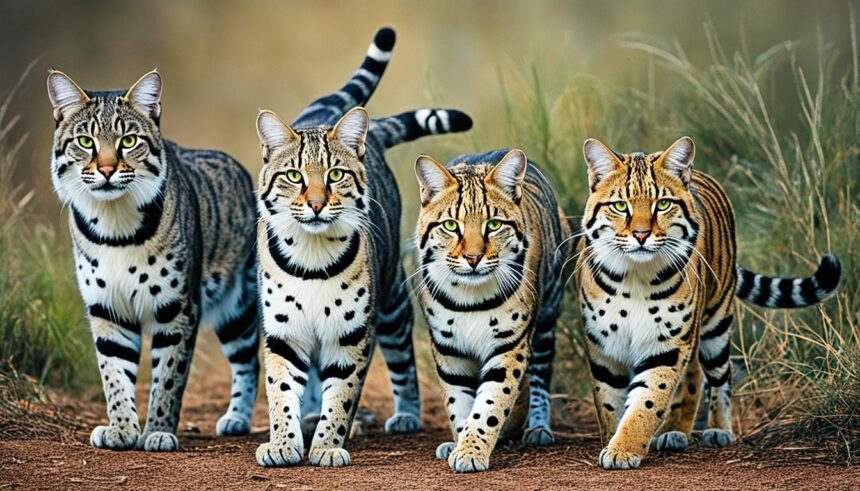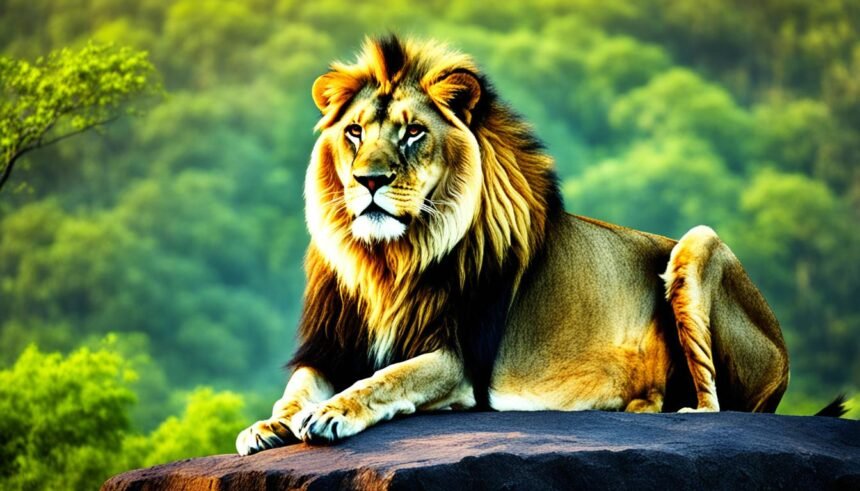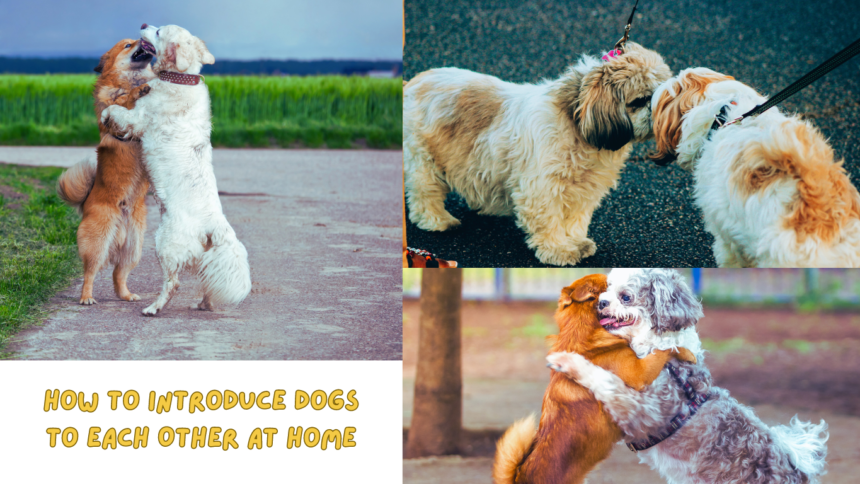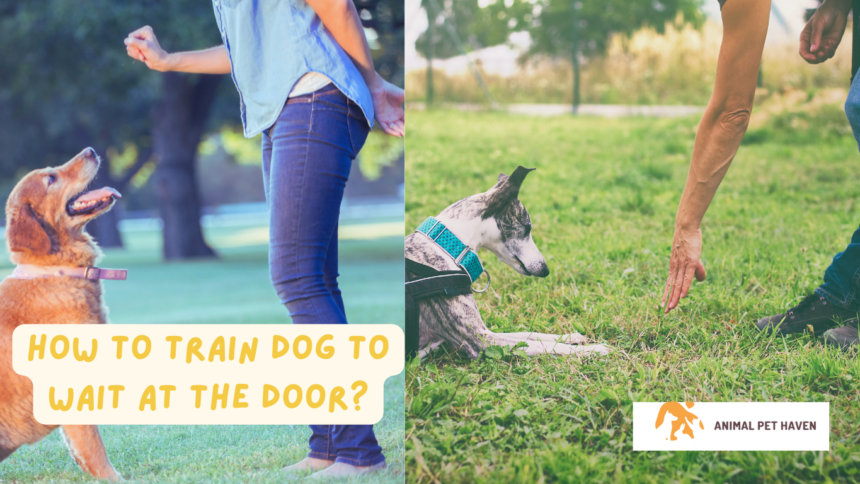The Australian Cattle Dog, also known as the Blue Heeler, is smart and loves being active. They come from Australia and were originally used for herding cattle. Their sturdy build and hardworking nature are key features.
They stand 17 to 20 inches high and weigh between 35 to 50 pounds. Typically, they live from 12 to 16 years. Their coat is short and dense, with colors like blue, red, and their variations.
This breed is known for its energy and needs lots of exercise and brain challenges. This keeps them happy and healthy.
These dogs do well in different activities like agility and obedience. They are sharp and like to make their owners happy. It’s key to get them to meet different people when they’re young so they grow up friendly.
They might be careful around people they don’t know, but they are super loyal to their families. Plus, they are great at keeping their home safe.
Before deciding to get one, think about the time and effort these dogs need. They thrive with owners who can keep up with their active lifestyle.
With the right care, an Australian Cattle Dog can become a wonderful part of the family for years.
What Is an Australian Cattle Dog?
The Australian Cattle Dog, known as the Blue Heeler or Red Heeler, is from Australia. It was made for herding cattle. This breed mixes various herders with the native dingo to create intelligent, active, and strong dogs.
Origin and History
In the early 19th century, British settlers took their herding dogs to Australia. But these dogs weren’t fit for the tough climate and long distances there. So, Australian settlers began to mix them with the local dingo. This led to the birth of the Australian Heeler, or Blue Heeler. It turned out to be a top breed for working due to its smart and tough nature.
Breed Characteristics
Australian Cattle Dogs are super smart, loyal, and protective. They love joining in on family fun. These dogs need a job and lots of exercise to be happy.
They’re also great at sports like agility and flyball. These activities keep them in top shape and challenge their minds.
| Characteristic | Male | Female |
|---|---|---|
| Height | 18-20 inches | 17-19 inches |
| Weight | 40-50 pounds | 35-45 pounds |
| Lifespan | 12-15 years | |
Australian Cattle Dogs guard their families but are cautious with strangers. It’s key to socialize and train them early. With the right care, these dogs are great for families who lead active lives.
Australian Cattle Dog vs Blue Heeler: Are They the Same?
The Australian Cattle Dog is known by several names, including Blue Heeler and Queensland Heeler. These names reflect its varied background and where it comes from. Despite the names, they all describe the same devoted, smart, and industrious dog.
The moniker “Blue Heeler” shows the breed’s blue-speckled coat. Another name, “Red Heeler,” points to the red-speckled variety. These colors are typical of the breed, with the blue type being more common. The term “Heeler” hints at their herding method of nipping at livestock’s heels to guide them.
“Queensland Heeler” is a title connecting the dog to its birthplace in Queensland, Australia. The breed was created in the 19th century to manage the harsh Australian outback. Dog breeders combined various dogs, such as the Smithfield Cattle Dog and the Dingo, to form a perfect herder.
The Australian Cattle Dog was first known as the “Australian Heeler” before being named officially. This term is still used in some places to highlight their herding talent and origin. Yet, the worldwide recognized name for the breed is the Australian Cattle Dog (ACD).
| Name | Origin |
|---|---|
| Australian Cattle Dog | Official name recognized by kennel clubs |
| Blue Heeler | Refers to the blue-speckled coat variety |
| Red Heeler | Refers to the red-speckled coat variety |
| Australian Heeler | Original name before breed standardization |
| Queensland Heeler | Nod to the breed’s place of origin in Queensland, Australia |
| Queensland Blue Heeler | Combination of region and coat color reference |
So, whether you use the term Australian Cattle Dog, Blue Heeler, or any other, you’re talking about the same clever, loyal, and hard-working breed. These dogs have been key to Australia’s past and are still prized for their working skills and friendship around the world.
Appearance and Coat Colors
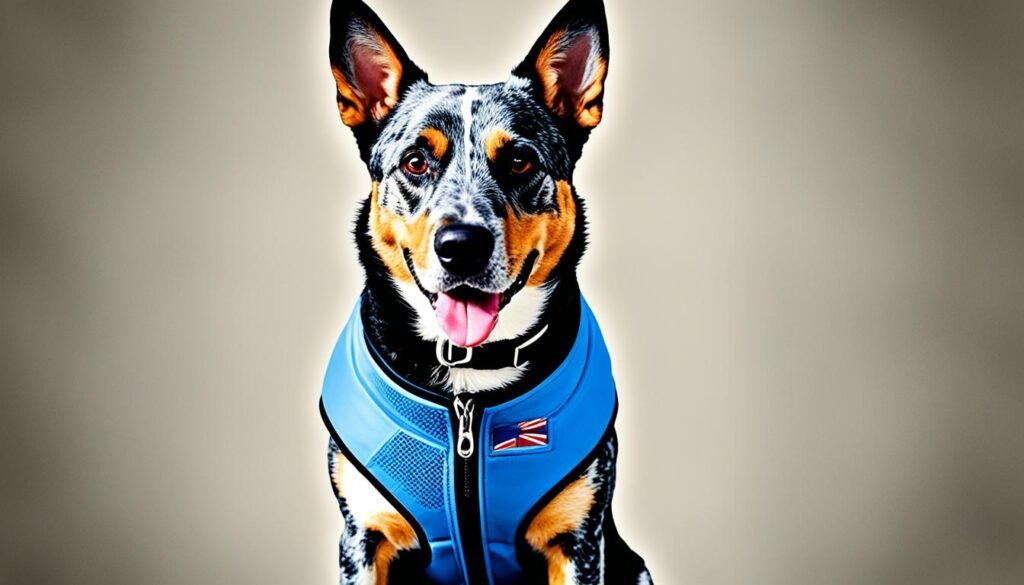
The Australian Cattle Dog is well-known as the Blue Heeler or Red Heeler. They have a look that makes them stand out. These smart dogs were bred to work hard herding cattle in the Australian Outback. Their strong bodies and unique coat colors show their history.
Blue Heelers
Blue Heelers come in various shades of blue like blue, blue mottled, and blue speckled. They have a short, double coat to keep them safe from the weather. You might see them with tan, red, or black and tan marks. A white patch on the forehead, called the Bentley Star, is a key trait. It’s interesting that when Australian Cattle Dog puppies are born, they are almost all white. They get their true colors as they grow up.
Red Heelers
Red Heelers are Australian Cattle Dogs with red coats. They also have a short, double coat. This protects them from extreme weather. They can be red speckled or red mottled, with red marks. Even though they are a different color, Red Heelers act much the same as Blue Heelers.
| Blue Ensemble | Red Regiment |
|---|---|
| Celestial Blue | Sunset Savant |
| Oceanic Opal | Copper Comet |
| Slate Serenader | Terra Tempest |
| Denim Dreamer | Auburn Alchemist |
| Bluegrass Balladeer | Ruby Rhapsodist |
| Arctic Azure | Sanguine Scribe |
| Twilight Tactician | Garnet Guardian |
| Scarlet Scholar |
Coat Maintenance
Australian Cattle Dogs don’t need much grooming despite their double coat. They should be bathed only when it’s really needed, or it might remove their coat’s oil. They shed a moderate amount all year, and a lot more during shedding season. Regular brushing, especially during shedding season, helps keep their coat in good shape. It’s also important to trim their nails and clean their ears often.
In the end, the Australian Cattle Dog’s look and coat colors tell a story of their past in Australia. They make great friends and are good at many things, from herding to sports.
Temperament and Personality Traits
Australian Cattle Dogs, or Blue Heelers, are very smart and full of energy. They are great at herding and have a strong drive to work. These dogs are loyal and protective, fitting well into families that are active and engaging.
Training them is easy, but making them meet others early is key. This helps them be good members of the family. It’s important for them to have mental challenges and lots of activity each day.
Intelligence and Trainability
Australian Cattle Dogs rank high among the smartest breeds. Their mix of independent and dingo traits makes them very clever. But, they need regular training and positive methods to behave.
Their early days with people and other dogs are crucial. It shapes how well they do with others in the future.
Loyalty and Protectiveness
These dogs are deeply loyal and keep their families safe. They take some time to warm up to strangers, so meeting lots of different people early is important. This makes them more sociable as they grow up.
Though strong, they don’t tend to act aggressively when they’ve met lots of folks and dogs. They might try to herd children by nipping their heels. But, this habit can be lessened with the right training.
Energy Levels and Exercise Needs
Blue Heelers, as herding dogs, have a lot of energy. They need long walks, runs or playtimes every day. A big, safe area for them to move around in is perfect. They also need mental games and puzzles to stay happy.
Without enough exercise, they might become naughty. So, keeping them busy and happy is vital. They really shine when they have a job to do, like herding, agility, or other sports with their human families.
| Trait | Level |
|---|---|
| Affection Level | High |
| Friendliness | High |
| Kid-Friendly | Medium |
| Pet-Friendly | Medium |
| Exercise Needs | High |
| Playfulness | High |
| Energy Level | High |
| Trainability | High |
| Intelligence | High |
| Tendency to Bark | Medium |
Health Concerns and Lifespan
Australian Cattle Dogs, known as Blue Heelers, are sturdy with an average lifespan of 12-15 years. The oldest recorded dog was Bluey, who lived for 29 years. Although strong, they can face some health issues.
They might have orthopedic problems like hip and elbow dysplasia. This leads to pain, less play, and limping. Progressive retinal atrophy (PRA) is an eye issue causing night blindness and loss of sight. Deafness also occurs, but vet tests can find it early.
Caring breeders check for these issues before breeding. Regular vet visits, good food, and proper exercise significantly help in keeping them well throughout their lives.
| Health Concern | Symptoms |
|---|---|
| Hip Dysplasia | Pain, decreased activity, limping in rear limbs |
| Elbow Dysplasia | Lameness, joint pain, reduced range of motion |
| Progressive Retinal Atrophy (PRA) | Night blindness, vision loss |
| Deafness | Unresponsive to sounds, startling easily |
They weigh 35-50 pounds and are 17-20 inches tall. Their coat is short, dense, and double-layered. They shed a lot. But, regular brushing, at least once a week, can help.
By knowing and acting on health concerns, we can ensure their well-being. This helps these dogs have long, healthy, and fun lives.
Training and Socialization
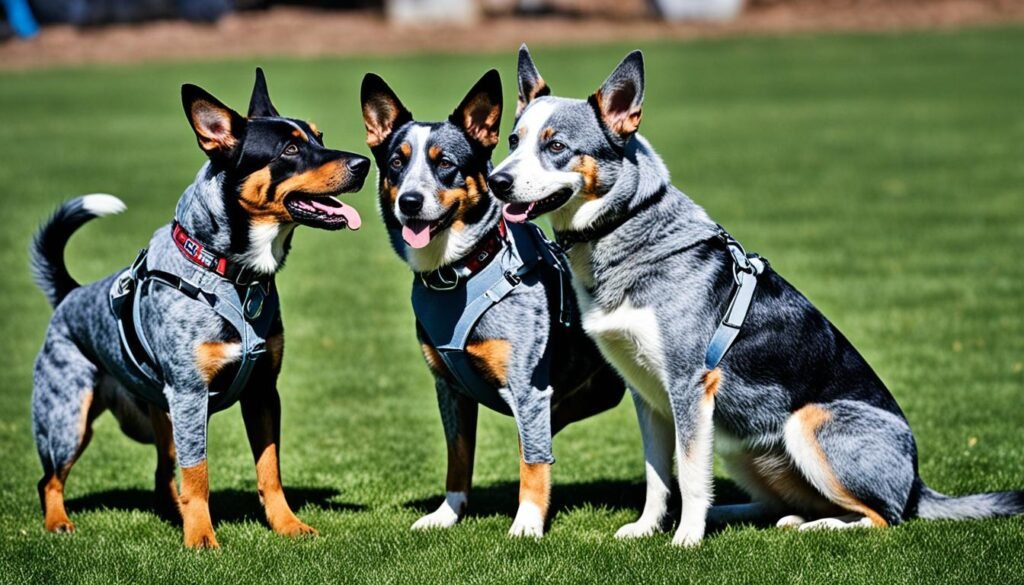
Training and socialization are key to raise a well-adjusted Australian Cattle Dog or Blue Heeler. These dogs are smart and full of energy. They need constant training and early socialization to become confident, friendly pets. It’s important to use positive methods and give them various experiences. This includes dealing with their need to herd. By doing so, these dogs fit well in both families and work situations.
Early Socialization
For Australian Cattle Dog puppies, early socialization is vital. They should get to know different people, animals, and places between the ages of 3 and 14 weeks. This early exposure helps them become outgoing and adaptable.
Here are some good ways to socialize a puppy:
- Take them to different places like parks and stores.
- Set up playdates with dogs of various types.
- Join puppy classes or obedience programs.
- Have quiet spots at home for them to relax.
- Keep socialization times short but regular.
Positive Reinforcement Training
Australian Cattle Dogs learn well with positive training. This means rewarding good behaviors and ignoring bad ones. Being consistent and patient is important when training these clever dogs. They love challenges and any opportunity to learn.
Training tips for Australian Cattle Dogs:
- Begin training early and keep it up regularly.
- Use treats and different rewards to keep them interested.
- Teach them new skills step by step.
- Praise them and give rewards for their efforts.
- Avoid harsh punishments, as they won’t understand.
Addressing Herding Instincts
Australian Cattle Dogs have a strong urge to herd, even nipping at heels. This can be managed through training and redirection. Teaching them the “leave it” command is helpful. Giving them tasks to fulfill their herding needs can also prevent unwanted behaviors.
Ways to use their herding instincts positively include:
- Taking part in herding activities or trials.
- Playing games or using toys that mimic herding actions.
- Joining agility or obedience training to keep them challenged.
- Using puzzle toys or games for mental exercise.
By mixing early socialization, positive training, and addressing their herding needs, owners can ensure a happy, well-behaved pet. Regular training helps keep them smart and balanced. This makes them great companions, both at home and at work.
Australian Cattle Dog and Blue Heeler: Top Facts
The Australian Cattle Dog, known as the Blue Heeler, is a remarkable breed. It has a rich history and unique qualities. These traits have made it a favorite among dog lovers worldwide. Let’s look at some of the top facts about this special breed.
Descended from Dingoes
The Australian Cattle Dog has a unique connection to the dingo, a wild dog in Australia. Early Australian settlers needed a strong, smart herding dog for the Outback. They mixed dingoes with other herding dogs to create a breed that was tough and smart. This mix set the Cattle Dog apart, giving it skills that are key for herding cattle today.
Bred for Herding Cattle
These dogs were born to herd cattle on wide Australian ranches. They are known for their smarts and endless energy. These traits help them work hard herding cattle. Their role is crucial on ranches and farms, even in modern times. They show their herding skills, proving why they are trusted working dogs.
Recognized by the American Kennel Club in 1980
The Australian Cattle Dog’s history is rich, especially in Australia. However, it wasn’t until 1980 that the American Kennel Club (AKC) officially recognized the breed. At first, it was listed under the Working Group, but in 1983, it moved to the Herding Group. This recognition by the AKC helped make the breed more popular in the United States.
| Characteristic | Value |
|---|---|
| Height | 17 to 20 inches |
| Weight | 35 to 50 pounds |
| Life Span | 12 to 16 years |
| Intelligence Level | Very High |
| Exercise Needs | High |
| Energy Level | Very High |
| Trainability Level | High |
The Australian Cattle Dog and Blue Heeler stand out for their smarts, energy, and ability to learn. They are great companions for people and families who are active. With hard work and loyalty, these dogs fit in well with such lively homes.
Ideal Living Conditions and Family Compatibility
Australian Cattle Dogs, or Blue Heelers, are very smart and energetic. They need a special living environment to be their best. They do well with families or people who love being active.
Active Lifestyles
These dogs love outdoor adventures. Running, hiking, and camping make them happy. They need at least 2 hours of exercise every day.
They also enjoy dog sports like agility and frisbee. These keep them physically and mentally strong. It also deepens the bond with their owner.
Since they have a lot of energy, they are not for quiet homes. Without enough exercise, they may get into trouble. Potential owners should think about their lifestyle. Can they meet the needs of a Blue Heeler?
Fenced Yards and Outdoor Spaces
A secure, fenced yard is a must for Australian Cattle Dogs. They love to explore and can run away easily.
But remember, a yard is not enough. They still need walks and playtime. This ensures they are happy and helps the family bond with their pet.
| Size | Males: 18-20 inches tall, 40-50 pounds Females: 17-19 inches tall, 35-45 pounds |
|---|---|
| Lifespan | 12-15 years |
| Exercise Needs | Minimum of 2 hours daily |
| Training | Easy to train, highly intelligent, requires early and consistent socialization |
| Sensitivity Levels | Can vary from tolerant to highly sensitive and reactive |
In closing, Australian Cattle Dogs fit well with active families or individuals. They need lots of exercise and mental challenges. A fenced yard is great, but not enough. Regular play and walks are a must. This keeps them happy and the family close.
Conclusion
The Australian Cattle Dog, also known as the Blue Heeler, is a special breed. It shows loyalty, smartness, and loves to be active. This breed was created in Australia in the 19th century to help with herding in tough outback areas. It’s a mix between the Dingo and British herding dogs like the Collie and Dalmatian. This mix gave them brains, problem-solving skills, and a hard working nature.
It stands about 17 to 20 inches tall and weighs 35 to 50 pounds. They live around 12 to 16 years. Their coat can be blue, red, or have spots. These dogs are not couch potatoes. They need lots of exercise and things that challenge their mind. This keeps them happy and well behaved.
The Blue Heeler is usually healthy. But they can have issues like hip and elbow problems, eye disease, and deafness. Owners need to take good care of them. This means proper training, making sure they meet others, and general good care. With the right home, they become great pets. They do well in sports like herding and agility. They are perfect for active people or families who can give them a lot of love and care.
FAQ
What is an Australian Cattle Dog?
The Australian Cattle Dog, or Blue Heeler, is a smart, active dog. It was first bred by Australian settlers for herding cattle. They are a mix of dingo and herding breeds, tough and well-suited to Australia’s climate.
Are Australian Cattle Dogs and Blue Heelers the same breed?
Yes, they are the same breed. They can be called Blue or Red Heelers, Australian or Queensland Heelers. But they are known as the Australian Cattle Dog.
What colors do Australian Cattle Dogs come in?
Despite being called Blue Heelers, they come in various colors. Blue Heelers have a blue coat with or without markings. Red Heelers, on the other hand, have a red coat.
Are Australian Cattle Dogs easy to train?
These dogs are very smart and easy to train. They are often considered one of the smartest breeds. But, they need socialization early on to be friendly with other dogs.
Do Australian Cattle Dogs make good family pets?
Australian Cattle Dogs love their families. They are loving but protective. It’s important they learn to be social when young. They’re best for active families who can give them lots of exercise and play.
How much exercise do Australian Cattle Dogs need?
They’re full of energy and need lots of exercise and play. 2 hours a day is a must. It would be best if you had a safe space for them to play. Without enough exercise, they can get bored and start causing trouble.
Are Australian Cattle Dogs prone to any health issues?
Usually, they’re healthy and live between 12 to 15 years. But they can have health issues like hip and elbow problems, eye conditions, and deafness. Regular health checks and a good diet are important.
Do Australian Cattle Dogs shed a lot?
They shed a fair amount all year but a lot more during shedding season. Brushing them weekly helps. When they’re shedding more, you might need to brush them more often.
Are Australian Cattle Dogs good with children?
With the right training and socialization, they can be great with kids. They might try to herd kids by nipping, but this behavior can be controlled. It’s always smart to watch them around children.
Do Australian Cattle Dogs need a fenced yard?
They do well with a big, safe yard, but they still need walks and playtime. They love to explore and can be very good at escaping. A strong, high fence keeps them safe.

